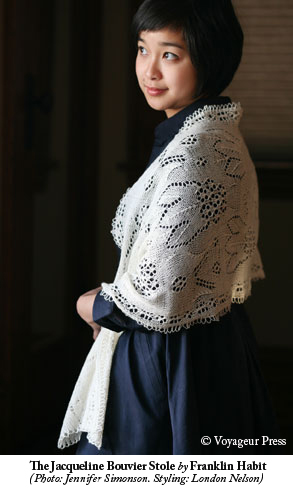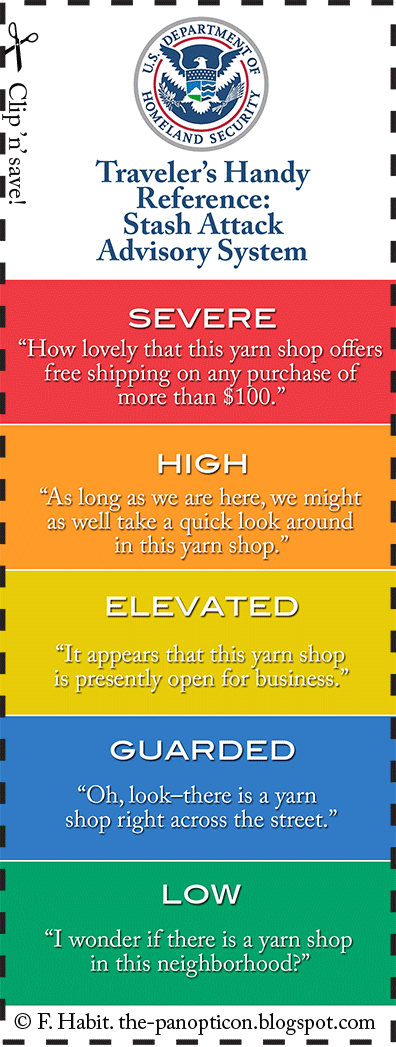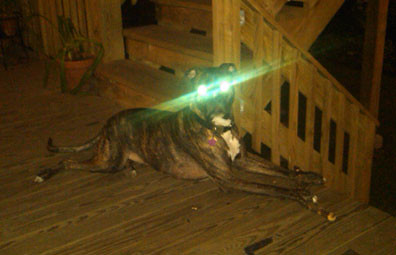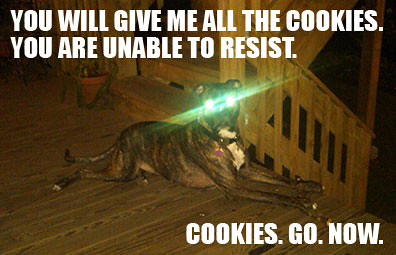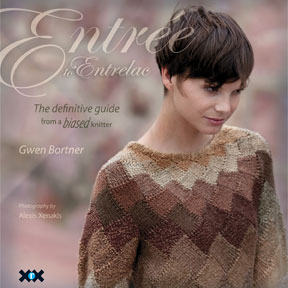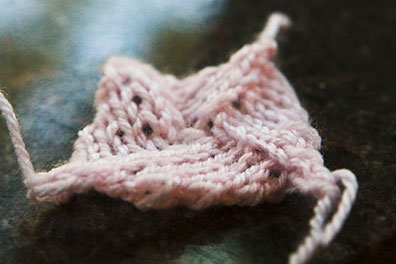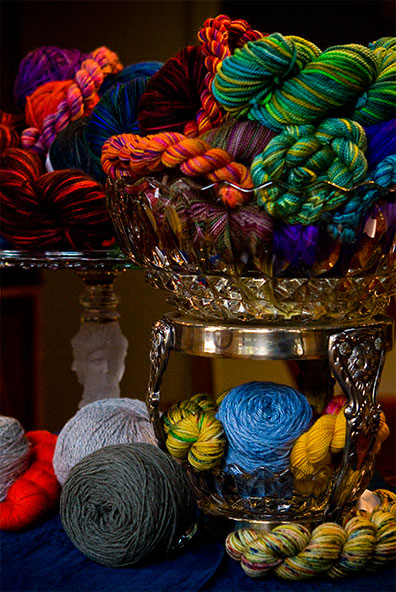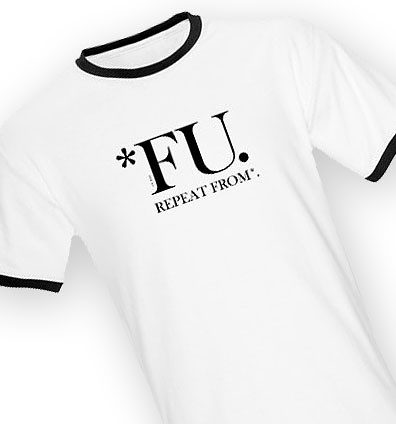(NOTE: I'm sorry that there won't be much today about knitting. I don't often veer off topic these days, but this is something I feel like I ought to write. I'll return to the usual yarn-based tomfoolery in my next entry.)My last post, in which I suggested
via t-shirt that persons unspecified should do something anatomically impossible to themselves and repeat from asterisk, has been up rather longer than intended. The plan was to follow up with something considerably chirpier, since bad moods are just that–moods. They pass.
The chirp has been pre-empted, however, due to a recent spate of suicides by young gay people.
This is not a new problem. Nor, sadly, is it uncommon. Suicide is the third-highest cause of death among Americans aged 15-24; and studies published in the past 15 years by the Federal government and the
American Journal of Public Health suggest that youth who identify as gay/lesbian/bisexual/transgender are two to three times more likely still to attempt to kill themselves.
It’s probably the lurid nature of the events leading up to the death of
Tyler Clementi, a Rutgers University freshman, that have pushed the problem out of the pages of specialty publications like our own, dear
Windy City Times and into the mainstream media. Tyler Clementi’s private life was surreptitiously streamed onto the Internet by his roommate, who also Twittered to let the world know what he was doing. Tyler, distraught at his abrupt outing and the subsequent torment by his peers, jumped off the George Washington Bridge.
Tyler was one of at least
nine young gay men known to have taken their own lives in the past few weeks due to anti-gay bullying.
As a result there have been, and continue to be, statements made by high-profile types–Ellen DeGeneres, Tim Gunn, the cast of “Modern Family,” etc.–under the theme I’ve used as the title of this post:
It Gets Better. The message is simple, short, and (one hopes) effective: it may seem like life isn’t worth living, but don’t give up just yet. As you grow older, it gets better.
I’m certainly no celebrity, but I’m adding my squeaky voice to the chorus on the off chance that it might, in a small way, help somebody somewhere sometime. Who knows? Maybe there’s a gay kid out there who’s suffering at the hands of his classmates because he’d rather knit than kick soccer balls. And maybe he wandered in here after Googling “garter stitch” or “toy elephant.”
If you’re reading this, kid, it’s for you.
I know what you’re going through. That’s not an empty statement. I mean I know exactly what you’re going through, because I walked a mile and then some in those leaden sneakers when I was your age.
Thinking about suicide? So did I. In fact, I did more than think about it. I tried it.
It wasn’t my idea.
I was egged on by quite a few authority figures, the ones who seemed at the time to run the world. They weren’t my parents, I hasten to add. I got lucky in the parental department; they didn’t always understand me, but they always loved me.
They–my bullies–were mostly teachers and school administrators. You see, I went to this
really, really awful little private high school devoted less to academics than to promoting the veins-in-your-teeth cult of virility. It was no place for sissies, and if they suspected you might be a sissy they did their best to beat it out of you.
I was only there for two years, but the life lessons they taught on a daily basis have always stuck with me. Here’s a small sampler, verbatim, including the language they felt was appropriate to use in front of schoolboys:
“We have to believe gay men choose to be gay. Otherwise we would have to admit that God makes mistakes, because there is no sorrier mistake than a bunch of faggots.”
“If my son turned out to be gay, he’d have two choices. He could shape up, or he could get the hell out of my house before I shot him through the head.”
“God created you to be a man, and to fuck women. If you don’t fuck women, you’re not a man. If you’re not a man or a woman, you don’t fit into creation and the sooner you leave it the better.”
“Frankly, if I was a gay man I’d shoot myself. I mean, I’d be going to Hell anyway and I might as well get on with it and skip over dying from AIDS.”
(Isn't it funny, Mr. Roberts? I don’t remember anything you taught about biology–you were a lousy teacher, so that’s no surprise. Yet I remember
so much of what you said with shocking clarity.)
Day in, day out for two long, painful years, I drank it in. I remember being flabbergasted at how often our teachers could work jabs at homosexuality into topics you’d think were completely unrelated. I was 13 and hitting puberty hard, yet I swear I was less obsessed with dick than they were.
Usually these barbs were volleyed at all of us, a general exhortation against the evils of buggery. But on especially bad days, they were aimed pointedly at
me, the designated class pansy–while the other boys listened and smirked.
That led directly to problems with a classmate who decided after one such lecture that he was going to prune me, the mutant bud, from the Tree of Life with his own hands–since that’s what God, the saints, and the faculty wanted. I appealed for help to a couple of teachers and to the dean, all of whom told me I was on my own.
If you’re going to act like that, they said,
you deserve what you get.Sound familiar?
Now, I was brought up to be a good kid and respect authority. And authority was telling me I was a horror in God’s eyes, and ought to bump myself off.
So I tried it. Not successfully, obviously. And not right then. I have a strong constitution; it took years for their poison to reach my vital organs. But it was probably bound to happen sooner or later.
It might not have if somebody, anybody, had been there tell me what I’m going to tell you.
People–teachers, parents, classmates, pastors, whoever–who call you a mistake are wrong. Totally wrong. Completely wrong. Wrongeddy-wrong-wrong.
You’re no more messed up than the straight kid in the next chair.
When they say that your nature is unnatural, they do not speak from wisdom. They are either misguided themselves, or they know better and are deliberately lying to you. Either way–you don’t have to listen. In fact, you shouldn’t. In fact, don’t.
I know. They appear to hold all the cards. They can force you to run laps, sit in detention, do punishment homework. But you have my solemn promise that this is temporary. One of these days you’ll be out of there, and such petty power as they possess can no longer touch you.
Hang on. Don’t let them keep you from pushing forward, because what’s waiting for you beyond is quite wonderful. It’s not all
couleur de rose, but it’s so much better than what you’re going through right now.
There are ways to get help.
The Trevor Project is a good place to start. You don't have to be desperate, either. Better, in fact, to seek a little support before you are desperate.
(And in the meantime, if you don’t know how to knit, please consider learning. It’s a marvelous way to keep calm, knitters are wonderful people to gather ’round you, and nothing says “piss off” to the bigots like a really amazing hand-knitted scarf.)

